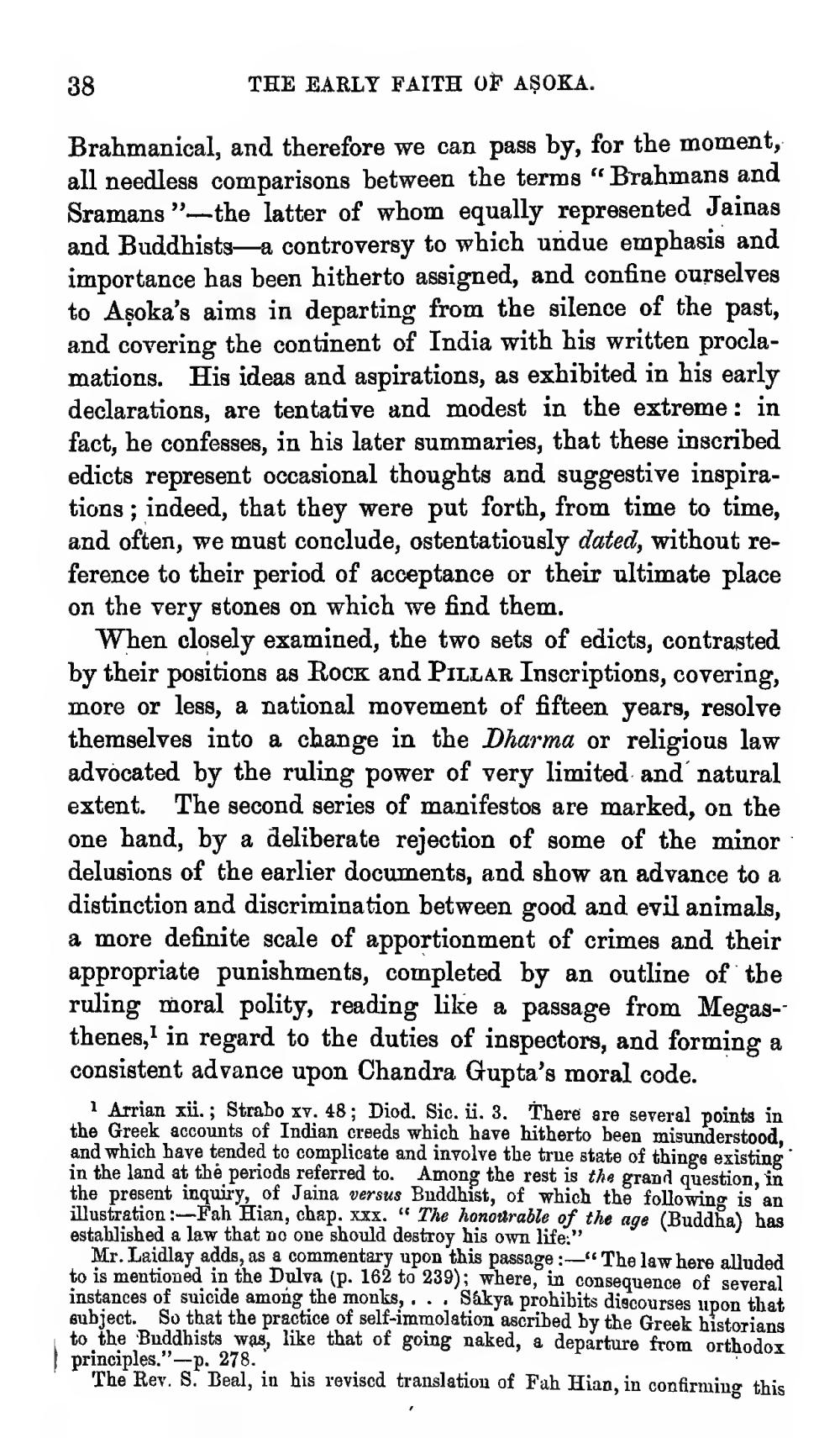________________
THE EARLY FAITH OF AȘOKA.
Brahmanical, and therefore we can pass by, for the moment, all needless comparisons between the terms "Brahmans and Sramans"-the latter of whom equally represented Jainas and Buddhists—a controversy to which undue emphasis and importance has been hitherto assigned, and confine ourselves to Asoka's aims in departing from the silence of the past, and covering the continent of India with his written proclamations. His ideas and aspirations, as exhibited in his early declarations, are tentative and modest in the extreme: in fact, he confesses, in his later summaries, that these inscribed edicts represent occasional thoughts and suggestive inspirations; indeed, that they were put forth, from time to time, and often, we must conclude, ostentatiously dated, without reference to their period of acceptance or their ultimate place on the very stones on which we find them.
38
When closely examined, the two sets of edicts, contrasted by their positions as Rock and PILLAR Inscriptions, covering, more or less, a national movement of fifteen years, resolve themselves into a change in the Dharma or religious law advocated by the ruling power of very limited and ́ natural extent. The second series of manifestos are marked, on the one hand, by a deliberate rejection of some of the minor delusions of the earlier documents, and show an advance to a distinction and discrimination between good and evil animals, a more definite scale of apportionment of crimes and their appropriate punishments, completed by an outline of the ruling moral polity, reading like a passage from Megas-thenes,1 in regard to the duties of inspectors, and forming a consistent advance upon Chandra Gupta's moral code.
1 Arrian xii.; Strabo xv. 48; Diod. Sic. ii. 3. There are several points in the Greek accounts of Indian creeds which have hitherto been misunderstood, and which have tended to complicate and involve the true state of thinge existing in the land at the periods referred to. Among the rest is the grand question, in the present inquiry, of Jaina versus Buddhist, of which the following is an illustration:-Fah Hian, chap. xxx. "The honourable of the age (Buddha) has established a law that no one should destroy his own life."
Mr. Laidlay adds, as a commentary upon this passage:"The law here alluded to is mentioned in the Dulva (p. 162 to 239); where, in consequence of several instances of suicide among the monks,. Sakya prohibits discourses upon that subject. So that the practice of self-immolation ascribed by the Greek historians to the Buddhists was, like that of going naked, a departure from orthodox principles."-p. 278.
The Rev. S. Beal, in his revised translation of Fah Hian, in confirming this




